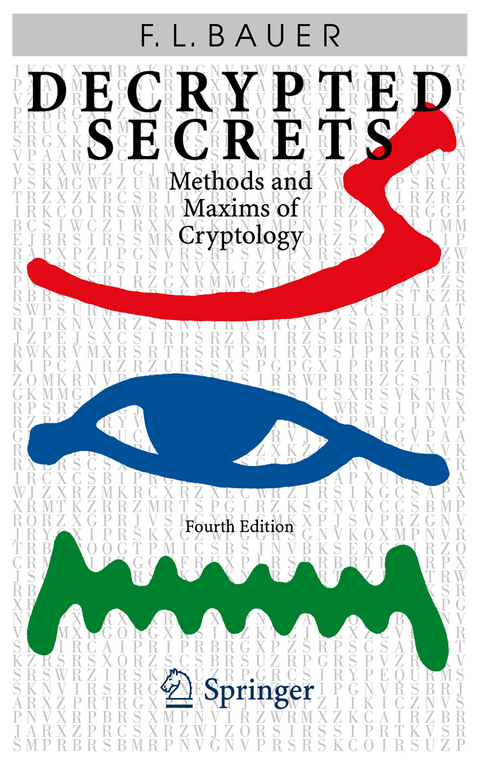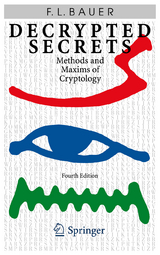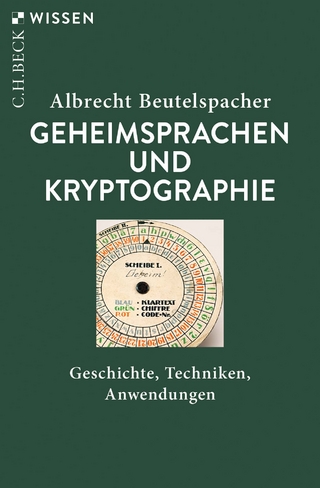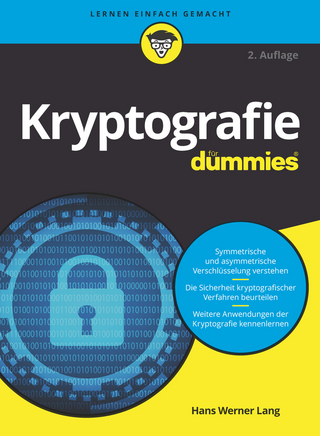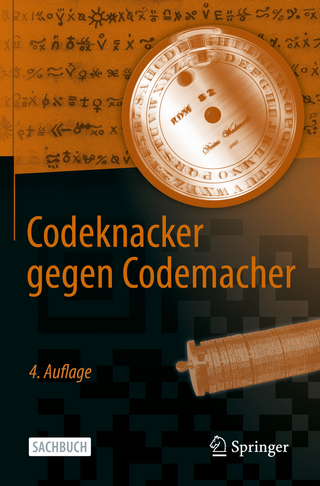Decrypted Secrets
Springer Berlin (Verlag)
978-3-540-24502-5 (ISBN)
The revised, expanded 3rd edition of this classic cryptology reference offers a wealth of new technical and biographical material. Requiring minimal math, and spiced with amusing and sometimes personal accounts from the history of cryptology, it will interest a broad readership.
Cryptology, for millennia a "secret science", is rapidly gaining in practical importance for the protection of communication channels, databases, and software. Beside its role in computerized information systems (public key systems), more and more applications within computer systems and networks are appearing, which also extend to access rights and source file protection. The first part of this book treats secret codes and their uses - cryptography. The second part deals with the process of covertly decrypting a secret code - cryptanalysis - where in particular advice on assessing methods is given. The book presupposes only elementary mathematical knowledge. Spiced with a wealth of exciting, amusing, and sometimes personal stories from the history of cryptology, it will also interest general readers. Decrypted Secrets has become a standard book on cryptology. This 4th edition has again been revised and extended in many technical and biographical details.
In today's extensively wired and unsafe world cryptology plays a vital role in guarding communication channels, databases, and software from unwanted intruders. Increased processing and communications speed, rapidly broadening access and multiplying storage capacity tend to make systems less secure over time, and security becomes a race against the relentless creativity of the unscrupulous. The revised and extended third edition of this classic reference work on cryptology offers a wealth of new technical and biographical details. The first part reviews secret codes and their uses the foundations of cryptography. The second part deals with the process of covertly decrypting a secret code - cryptanalysis, and gives particular advice on assessing methods. The book presupposes only elementary mathematical knowledge. Spiced with a wealth of exciting, amusing, and sometimes personal accounts from the history of cryptology, it will also interest general readers.
Cryptography-The People.- Introductory Synopsis.- Aims and Methods of Cryptography.- Encryption Steps: Simple Substitution.- Encryption Steps: Polygraphic Substitution and Coding.- Encryption Steps: Linear Substitution.- Encryption Steps: Transposition.- Polyalphabetic Encryption: Families of Alphabets.- Polyalphabetic Encryption: Keys.- Composition of Classes of Methods.- Open Encryption Key Systems.- Encryption Security.- Cryptanalysis-The Machinery.- Exhausting Combinatorial Complexity.- Anatomy of Language: Patterns.- Polyalphabetic Case: Probable Words.- Anatomy of Language: Frequencies.- Kappa and Chi.- Periodicity Examination.- Alignment of Accompanying Alphabets.- Compromises.- Linear Basis Analysis.- Anagramming.- Concluding Remarks.
"The best single book on cryptology today." -- Cryptologia (from a review of a previous edition)
From the reviews of the fourth edition:
"This comprehensive updated edition is divided into two sections. The first part of the book deals with The People and the second concentrates on The Machinery. ... This volume includes 191 Figures, 29 Tables and 16 Color Plates, plus an Appendix. ... Friedrich L. Bauer Professor Emeritus of Mathematics and Computer Science ... has written an outstanding book on cryptology that belongs in your personal library or as a gift for a friend. ... There are other fascinating sidelights to this excellent book." (The Cryptogram, Page 15, 2007)
"By far the best single work on the subject." -- David Kahn
"It contains a wealth of material on the history of classical cryptology, focusing especially on the first half of the 20th century. ... The book is so thorough that it could serve as a textbook for those who want to develop their skills in this area. ... this book is an excellent source for the history of codemaking and codebreaking in the early and mid-20th century." (Neal Koblitz, SIAM Review, Vol. 52 (4), 2010)
"The best single book on cryptology today." -- Cryptologia (from a review of a previous edition)From the reviews of the fourth edition:"This comprehensive updated edition is divided into two sections. The first part of the book deals with The People and the second concentrates on The Machinery. … This volume includes 191 Figures, 29 Tables and 16 Color Plates, plus an Appendix. … Friedrich L. Bauer Professor Emeritus of Mathematics and Computer Science … has written an outstanding book on cryptology that belongs in your personal library or as a gift for a friend. … There are other fascinating sidelights to this excellent book." (The Cryptogram, Page 15, 2007)"By far the best single work on the subject." -- David Kahn“It contains a wealth of material on the history of classical cryptology, focusing especially on the first half of the 20th century. … The book is so thorough that it could serve as a textbook for those who want to develop their skills in this area. … this book is an excellent source for the history of codemaking and codebreaking in the early and mid-20th century.” (Neal Koblitz, SIAM Review, Vol. 52 (4), 2010)
| Erscheint lt. Verlag | 6.10.2006 |
|---|---|
| Zusatzinfo | XIV, 525 p. 183 illus., 16 illus. in color. |
| Verlagsort | Berlin |
| Sprache | englisch |
| Maße | 155 x 235 mm |
| Gewicht | 1044 g |
| Themenwelt | Informatik ► Theorie / Studium ► Kryptologie |
| Schlagworte | Calculus • Code • Communication • Complexity • Cryptanalysis • Cryptoanalysis • cryptography • Cryptosystems • Databases • Information • Kryptanalyse • Kryptographie • Kryptographie / Kryptologie • Kryptosysteme • Öffentliche Schlüssel • Public Keys • security |
| ISBN-10 | 3-540-24502-2 / 3540245022 |
| ISBN-13 | 978-3-540-24502-5 / 9783540245025 |
| Zustand | Neuware |
| Haben Sie eine Frage zum Produkt? |
aus dem Bereich
